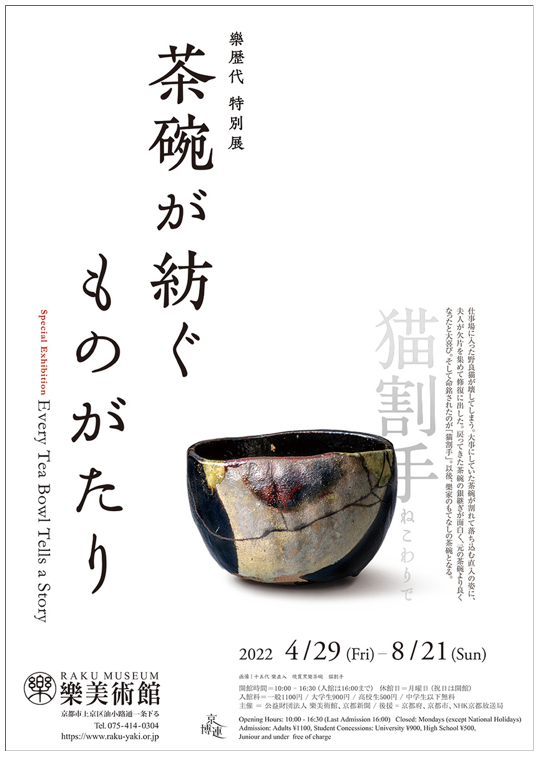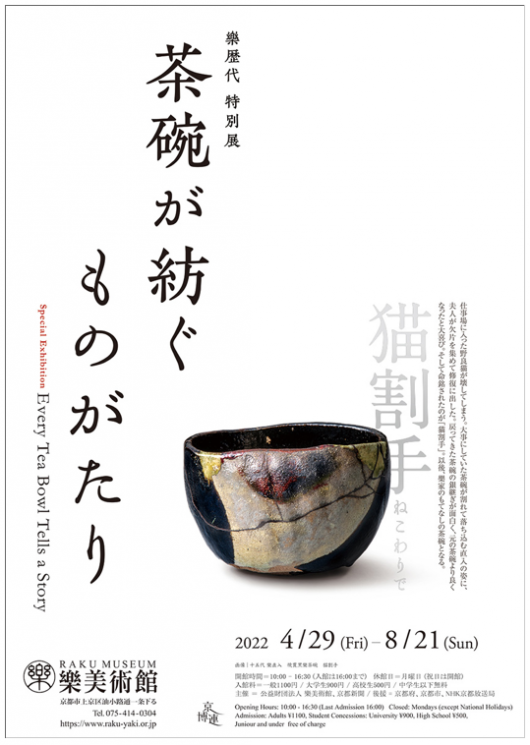Event
Date April 29 (Fri.) – August 21 (Sun.), 2022
Hours: 10:00 ~ 16:30(entry up to 30 minutes before closing.)
Closed: Monday (Open: if the Monday is a national holiday)
Admission:
Adults ¥1,100
University Students ¥900
High School Students ¥500
Juniour high school student and under – free admission
https://www.raku-yaki.or.jp/museum/exhibition/forthcoming_exhibitions.html
Venue
Raku Museum
http://www.raku-yaki.or.jp/e/
Access:Aburanokôji-dôri Ichijô sagaru Kamigyo-ku Kyoto 602-0923
Tel: 075-414-0304
Description
As every human being has a unique story of one’s life to tell, so does every object.
Tea utensils that have survived until the present day have gone through various hands of people who treasured and cherished, weaving colourful threads of story into a brocade of history.
Raku tea bowls also have particular stories to tell through a long journey they have taken to arrive to where it is now.
All goes back to the Azuchi-Momoyama period (1568-1600) when Oda Nobunaga (1534-1582) and Toyotomi Hideyoshi (1537-1598) were dominant rulers.
The story began when Raku Chōjirō met Sen Rikyū (1522-1591) who wanted to commission a tea bowl made locally to meet his tea aesthetics, while a prevailing fashion at the time was to adopt Chinese or Korean wares in the tea ceremony.
Hence Raku tea bowls were born.
After the death of Rikyū, Shōan (1546-1614), his son-in-law, followed by Sōtan (1578-1658), his grandson, inherited Rikyū’s legacy to become established as the three lines of the Sen family – Omotesenke, Urasenke and Mushanokōjisenke, headed by each iemoto, tea master of these three schools of tea, whose venture was joined by the Raku family from the outset.
450 years’ storytelling accounted by all the Raku generations has started since the time of the founder Raku Chōjirō and is still continuing.
Every episode around a tea bowl that came into the world by the hands of each generation has its sense of being told, even if not necessarily important or worth telling. It is about how it was used for daily tea drinking under a certain period of time or place and how a ceaseless chain of hands of people who once handled the bowl has marked it with rich layers of stories and episodes, sometimes even unwrapping an event that happened several hundred years ago.
This exhibition highlights a selection of works by Raku generations, showcasing how they have been embraced by stories told over years via colourful encounters with people across time and place and through attachment and care cherished by those who owned.






